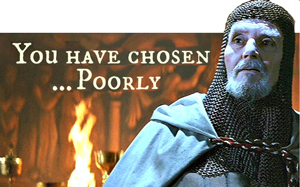Note: This blog post builds upon The High Cost of Poor Executive Hiring Decisions posted in April 2018.
The evaluation of candidates for C-level and other executive positions has improved over the years, however tremendous opportunity remains. Regarding making a hiring decision at this level of the organization, a private equity client of mine recently said that “Making the right selection decision is critical and making a wrong one could be disastrous.”
For many years, there seemed to be a “next man up” approach whereby the successor was, for all intents and purposes, the next person on the organization chart. As considering external candidates became more commonplace, aspects that the hiring company didn’t have first-hand knowledge of, such as the person’s skills, experience, and track record, were essential to know about and understand. These items have typically been captured on a candidate’s résumé or curriculum vitae (CV).
Behavior-based interviewing techniques have been increasingly used since their introduction in the 1970s. Behavioral interviewing focuses on a candidate’s past experiences by asking them to provide specific examples of how they have demonstrated certain behaviors, knowledge, skills and abilities. These techniques equipped interviewers with more effective methods to question candidates. Unfortunately, both the usage of proper behavioral interviewing techniques and effective utilization of the information collected lag far behind what they should be (at least in my experience).
A next step in the evolution of executive candidate evaluations involved the use of diagnostic tools such as assessments. Initially, many of these assessments focused primarily on areas such as a person’s skills, personality, intelligence (think IQ tests), and job interests. Many of these assessments are used today and provide another layer of information and insight regarding the candidate. However, the likelihood that a poor hiring decision is made has remained too high.
In response to the critical nature of making a good hiring decision (as well as the enormous negative impacts from making a poor one), business is evolving to incorporate other aspects into the evaluation process. These include: exploring an executive candidate’s potential “fit” (e.g., with the company culture, the leadership team, and board of directors), understanding their ability to adapt to changing situations and conditions (global pandemic, anyone), and assessing their stress tolerance and emotional intelligence (EQ).
Like the common disclaimer with respect to stocks (that past performance is no guarantee of future results), the same holds true regarding executive performance. Although an executive’s experience, skills, knowledge, and accomplishments “travel” with them from one job to the next, their ability to succeed, even in a job that they seem well-suited for, is not guaranteed. As an analogy, consider an All-Pro NFL quarterback who moves to a new team. Although he is taking with him his current skill set as a professional athlete, he will be dealing with a different head coach and offensive coordinator, a different offensive line, a new offensive scheme, a new team culture, new teammates, a new home stadium, new fans, etc. etc.
I use this example to illustrate that too often we assume that an executive’s past performance will somehow fairly automatically and seamlessly translate to a new job and different work situation. However, at great risk, we often overlook the myriad other factors that can impact an executive’s performance in a new job, even if it is at the same company.
Please Contact Us if you’d like to learn more about how we work with our clients to evaluate C-level candidates.

